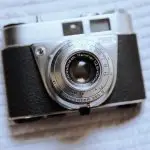When it comes to bonding materials for fabrics, finding the right one is like discovering the perfect puzzle piece. The best bonding material will seamlessly unite your fabrics, ensuring a durable and professional finish.
Different types of bonding materials offer unique benefits, such as heat-activated adhesives for precision, spray adhesives for ease of application, fusible interfacing for structural support, liquid fabric glues for versatility, and double-sided fusible web for intricate designs.
Understanding the characteristics of each bonding material will empower you to select the most suitable option for your specific fabric and project, leading to a seamless and polished outcome.
Key Takeaways
- Heat-activated adhesives offer precision and can be used for a wide range of fabrics.
- Spray adhesives provide convenience and versatility for fabric bonding.
- Fusible interfacing provides structural support for fabrics.
- Fabric glues offer a strong and permanent bond without the need for sewing.
Types of Bonding Materials
When choosing bonding materials for fabrics, you should consider various options that offer different properties and performance. Chemical bonding techniques provide a strong and durable bond between fabrics, utilizing adhesives selected based on the specific materials being bonded. These adhesives can range from solvent-based to water-based, each offering distinct characteristics such as flexibility, washability, and resistance to heat and chemicals.
Sewing alternatives are also widely used, offering a no-sew bonding option for fabrics. These alternatives include fusible webbing and tapes, which create a bond when subjected to heat and pressure, and fabric glues that provide a strong, permanent bond without the need for sewing. No-sew bonding options cater to different fabric weights and types, ensuring a versatile range of choices for various applications.
In the realm of bonding materials for fabrics, it's essential to weigh the advantages and limitations of each option carefully. Understanding the specific requirements of your project and the properties of the fabrics involved will guide you toward selecting the most suitable bonding material.
Heat-Activated Adhesives
When it comes to fabric bonding with heat-activated adhesives, the versatility in applications is notable. These adhesives offer a strong bond that can withstand various conditions, making them suitable for a wide range of fabrics and materials.
Understanding the specific points related to the use of heat-activated adhesives will help you make informed decisions when choosing the best bonding material for your fabric projects.
Fabric Bonding With Heat
To bond fabrics with heat, you should activate the adhesive using a heat source such as an iron or a heat press. This method involves using heat-activated adhesives to bond fabrics together.
Here are five tips for fabric bonding with heat:
- Ensure the temperature of the heat source is appropriate for the specific type of fabric you're bonding.
- Use a pressing cloth or silicone sheet to protect delicate fabrics from direct heat.
- Apply even pressure when using an iron or heat press to ensure uniform bonding.
- Consider using fusible web or adhesive films as alternative options for heat bonding fabrics.
- Follow manufacturer's guidelines for temperature and pressing duration to achieve optimal bonding results.
Versatility in Applications
One key advantage of heat-activated adhesives is their ability to bond a wide range of fabrics, making them a versatile choice for various applications. These adhesives offer innovative techniques for bonding fabrics, allowing for a myriad of applications across different industries. Below is a table showcasing some of the versatile applications of heat-activated adhesives:
| Application | Description |
|---|---|
| Apparel | Bonding fabrics for seamless garment assembly |
| Automotive Upholstery | Bonding fabrics for durable and sleek interiors |
| Home Textiles | Creating decorative designs on various fabrics |
| Industrial Filtration | Bonding filter materials for enhanced efficiency |
These applications demonstrate the diverse uses of heat-activated adhesives, making them a preferred choice for professionals seeking efficient and reliable fabric bonding solutions.
Spray Adhesives
When considering bonding materials for fabrics, spray adhesives offer a convenient and versatile option.
The adhesion strength of spray adhesives can vary based on the specific product and application method.
Additionally, spray adhesives are known for their durability and washability, making them suitable for a wide range of fabric projects.
Adhesion Strength Comparison
You often need a strong, reliable adhesive when working with fabrics, and spray adhesives can provide the adhesion strength you require for your projects.
When comparing adhesion strength of spray adhesives, consider the following:
- Application Technique: Proper application technique ensures maximum adhesion strength.
- Drying Time: Longer drying times often result in stronger adhesion.
- Fabric Compatibility: Some spray adhesives are specifically formulated for certain fabric types.
- Bonding Surface: The type of surface being bonded impacts adhesion strength.
- Environmental Factors: Consider how factors such as temperature and humidity may affect adhesion strength.
Understanding these factors can help you select the spray adhesive with the adhesion strength best suited for your fabric bonding needs.
Application and Versatility
To achieve strong and versatile fabric bonding with spray adhesives, it's important to consider the application technique and compatibility with different fabric types.
When using spray adhesives, the bonding technique is crucial. Ensure an even application by holding the canister at the recommended distance and moving it steadily across the fabric surface. This helps to avoid oversaturation or uneven coverage, resulting in a more reliable bond.
Additionally, understanding the compatibility of spray adhesives with various fabric materials is essential for practical uses. Different fabric types may require specific adhesives to achieve optimal bonding. Consider the material selection carefully to ensure the adhesive is suitable for the intended application.
With the right bonding techniques and material selection, spray adhesives offer a wide range of creative applications and practical uses for fabric bonding.
Durability and Washability
For optimal durability and washability when using spray adhesives for fabric bonding, it's essential to select a product specifically designed to withstand laundering and maintain strong adhesion over time.
When considering the durability and washability of spray adhesives for fabric bonding, look for the following key features:
- Colorfastness: Ensure that the spray adhesive is designed to maintain the colorfastness of the fabric, preventing any color bleeding or fading during washing.
- Resistant to Washing: Choose a spray adhesive that's resistant to washing and doesn't lose its bonding strength with repeated laundering.
- Long-Lasting Adhesion: Look for a product that offers long-lasting adhesion even after multiple wash cycles, ensuring the fabric remains securely bonded.
- Compatibility with Fabrics: Select a spray adhesive that's suitable for a wide range of fabrics to ensure versatility in usage.
- Non-Yellowing: Opt for a spray adhesive that doesn't cause the fabric to yellow over time, maintaining its original appearance.
Fusible Interfacing
When bonding fabrics, fusible interfacing is commonly used to create a durable and smooth finish. Fusible interfacing is a versatile material that can significantly impact the stability and drape of fabric. It is essential to choose the right type of fusible interfacing to ensure the best results for your project.
| Fusible Interfacing and Fabric Stability | Fusible Interfacing and Fabric Drape |
|---|---|
| Fusible interfacing reinforces fabric, preventing stretching and distortion. It stabilizes areas such as collars, cuffs, and waistbands, adding structure and durability to the garment. | The choice of fusible interfacing affects the drape of the fabric. Lighter weight interfacing preserves the natural drape, suitable for lightweight fabrics like silk. Heavier interfacing adds body and structure, ideal for stiffer fabrics such as denim or wool. |
It is crucial to consider the weight and type of fabric when selecting fusible interfacing to achieve the desired stability and drape. Understanding the impact of fusible interfacing on fabric characteristics enables you to make informed decisions, ensuring the successful outcome of your sewing projects.
Liquid Fabric Glues
Select the appropriate liquid fabric glue based on the weight and type of fabric to ensure optimal stability and bonding for your sewing projects. Liquid fabric glues are versatile and can be used for a variety of fabric repair and crafting purposes.
When choosing a liquid adhesive for fabric repair, consider the following factors:
- Viscosity: Opt for a liquid fabric glue with a moderate viscosity that allows for easy application without running or dripping.
- Drying Time: Look for a fast-drying liquid adhesive to expedite the fabric repair process and minimize wait times.
- Flexibility: Ensure that the liquid fabric glue remains flexible after drying to accommodate the natural movement of the fabric without cracking or stiffening.
- Washability: Choose a liquid adhesive that's machine washable and dry cleanable to maintain the integrity of the fabric after repair.
- Compatibility: Check the compatibility of the liquid fabric glue with different fabric types to ensure that it adheres well to the specific fabric you're working with.
Double-Sided Fusible Web
You frequently use double-sided fusible web to easily bond fabrics for various sewing and crafting projects. This fabric bonding technique involves using a thin layer of adhesive webbing that's placed between two pieces of fabric and then fused together with heat.
The double-sided nature of the fusible web makes it convenient for attaching fabric without the need for sewing, as it can be adhered to both the front and back of the material. One of the main advantages of using double-sided fusible web is its ability to create strong and durable bonds between fabrics, providing a reliable hold for various applications. Additionally, it's a quick and efficient method for joining fabrics, especially for projects that require precision and intricate detailing.
However, some drawbacks to consider include the potential for the adhesive to leave residue on the fabric and the limitations in terms of the types of fabrics it can effectively bond.
Beyond fabric bonding, double-sided fusible web also has alternative uses such as in appliqué work and creating fabric embellishments.
Frequently Asked Questions
Can Bonding Materials Be Used on All Types of Fabrics, Including Delicate or Stretchy Fabrics?
Yes, bonding materials can be used on all types of fabrics, including delicate or stretchy fabrics. They are effective for fabric repair and can provide a strong bond without causing damage to the delicate or stretchy material.
Are There Any Bonding Materials That Are Specifically Designed for Outdoor or Waterproof Fabrics?
For outdoor fabrics, waterproof fabrics, look for bonding materials designed for those specific purposes. Delicate fabrics may require gentler bonding agents to avoid damage. Consider the fabric's needs when choosing the right bonding material.
How Long Does It Typically Take for Bonding Materials to Fully Set and Create a Strong Bond?
When applying bonding materials, the setting time varies based on factors such as temperature and humidity. Generally, it takes around 24-48 hours for the material to fully set and create a strong bond.
Can Bonding Materials Be Used to Repair Tears or Holes in Fabrics, or Are They Primarily for Creating New Bonds Between Fabric Pieces?
When repairing tears in fabrics, bonding materials can be a versatile solution. Options range from adhesives to fusible webbing, suitable for delicate fabrics and stretchy fabric repair. Consider the fabric type and tear size for proper bonding.
Are There Any Bonding Materials That Are Safe for Use on Children's Clothing or Items That May Come Into Contact With Skin?
When considering bonding materials for children's clothing or items that may come into contact with skin, it's crucial to prioritize safety. Look for skin-friendly bonding materials that are specifically designed for fabric bonding safety to ensure protection and comfort.
- Why Open-Weave Scrim Is the Secret to Stunning Event and Canopy Designs - June 26, 2025
- Creating Large-Scale Art Installations With Scrim Fabric - June 26, 2025
- Scrim Fabric in Upholstery: Understanding Its Use as a Backing Material - June 26, 2025







